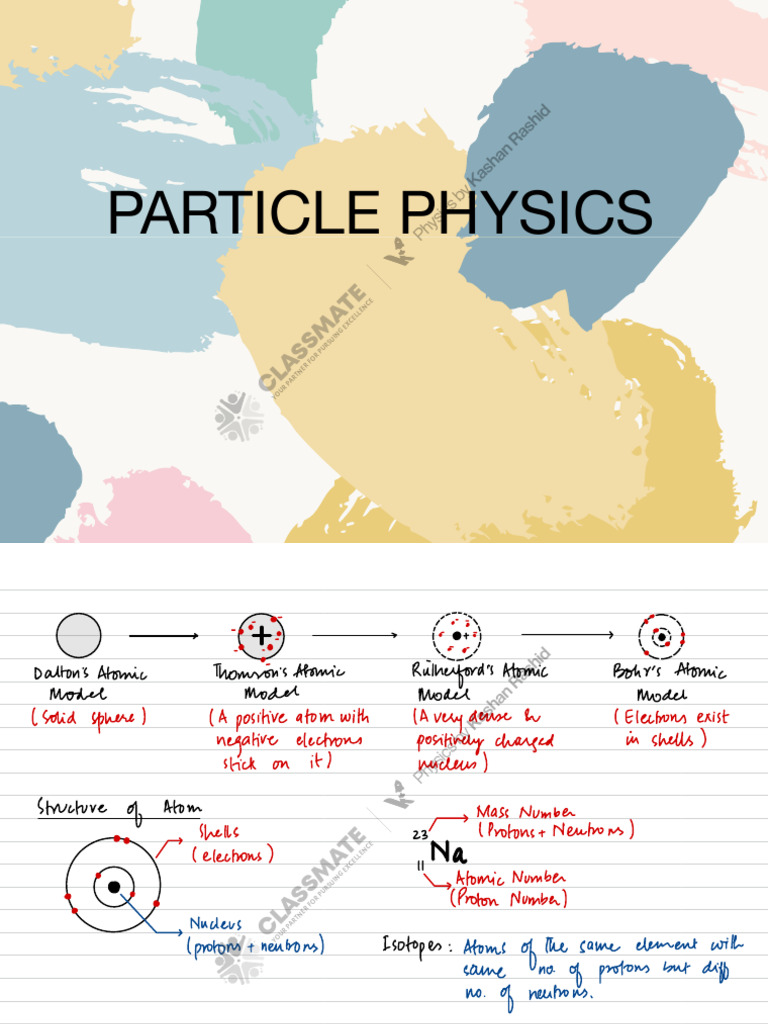Particle physics, an intricate tapestry woven from the threads of fundamental interactions and quantum mechanics, explores the subatomic realm that constitutes the very framework of matter and energy in our universe. This field encompasses not only the quest to identify the basic building blocks of the cosmos but also the interactions that govern their behavior. An understanding of these elements is pivotal for elucidating the fundamental laws of nature.
1. The Building Blocks of Matter
In the domain of particle physics, matter is principally composed of elementary particles. These are categorized into two principal classes: fermions and bosons. Fermions include quarks and leptons, which conform to the Pauli exclusion principle, while bosons, such as the photon and the gluon, mediate interactions between matter particles.
1.1 Quarks
Quarks are fundamental constituents of protons and neutrons, which make up atomic nuclei. There are six flavors of quarks—up, down, charm, strange, top, and bottom—each possessing unique properties such as electric charge and mass. Quarks combine in groups of three to form baryons (e.g., protons and neutrons) or in pairs to create mesons. The strong force, mediated by gluons, binds quarks together, resulting in the stability of atomic nuclei.
1.2 Leptons
Leptons, on the other hand, are a family of particles that do not experience the strong force. The electron is the most well-known lepton, but each flavor of lepton has a corresponding neutrino. Neutrinos, while difficult to detect due to their minuscule interaction with matter, play crucial roles in processes such as fusion in stars and are integral to our understanding of cosmic phenomena.
2. The Fundamental Forces
The behavior and interactions of these elementary particles are governed by four fundamental forces: gravitational, electromagnetic, weak, and strong forces. Each force plays a distinct role in the fabric of the universe.
2.1 Gravitational Force
While not directly addressed in particle physics, gravity permeates all interactions on a cosmic scale. It is the weakest of the four forces but dominates the large-scale structure of the universe, governing the motion of celestial bodies and the formation of galaxies.
2.2 Electromagnetic Force
The electromagnetic force arises from the exchange of photons and is responsible for the interactions between charged particles. This force governs atomic structures and molecular bonds, thus shaping chemistry and ultimately life itself.
2.3 Weak Nuclear Force
The weak force, mediated by W and Z bosons, is crucial for processes such as beta decay in radioactive isotopes. Its effects, though short-ranged, are vital for nuclear fusion, which fuels stars and is the source of elements in the universe.
2.4 Strong Force
The strong force is the most potent of the four and is essential for binding quarks into protons and neutrons, and subsequently those nucleons into atomic nuclei. This force operates over a very short range but is fundamental to the stability of atoms.
3. The Standard Model of Particle Physics
Central to modern particle physics is the Standard Model, a theoretical framework that encapsulates our understanding of the electromagnetic, weak, and strong forces. This model categorizes all known elementary particles and details how they interact through these three forces. Despite its staggering success, the Standard Model has limitations, particularly in its inability to account for gravity or dark matter.
3.1 Higgs Boson
One of the pivotal discoveries of the Standard Model is the Higgs boson, which is associated with the Higgs field. This scalar field permeates the universe, imparting mass to elementary particles through the mechanism of spontaneous symmetry breaking. The Higgs boson was confirmed in 2012 through experiments at the Large Hadron Collider, marking a triumphant moment in particle physics.
4. Beyond the Standard Model
The pursuit of a comprehensive understanding of the universe has led physicists to explore theories that extend beyond the Standard Model. Concepts such as supersymmetry, string theory, and quantum gravity posits potentially new particles and forces, aiming to unify the fundamental forces and account for phenomena not yet explained.
5. Current and Future Research Directions
Particle physics continues to evolve, driven by experimental discoveries and theoretical advancements. Major research facilities such as CERN’s Large Hadron Collider aim to probe deeper, investigating not only the Higgs boson but also searching for dark matter candidates and insights into the early universe. The frontiers of this field remain tantalizingly open, with prospects of new discoveries that could reshape our understanding of the fundamental components of reality.
Conclusion
The fundamentals of particle physics reveal a complex yet coherent framework that explains the nature of matter and energy. By delving into the properties and interactions of elementary particles, one gains insight into the underlying mechanisms that govern the universe. As research expands and technology advances, the mysteries of particle physics will continue to unravel, enriching our comprehension of the cosmos and our place within it.












